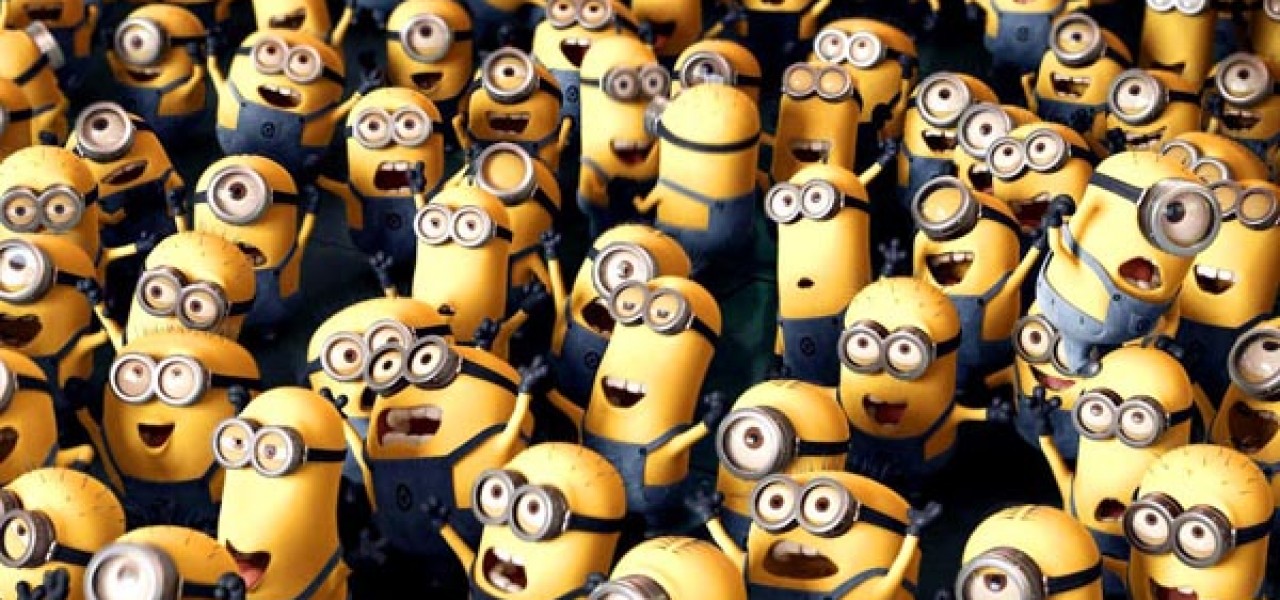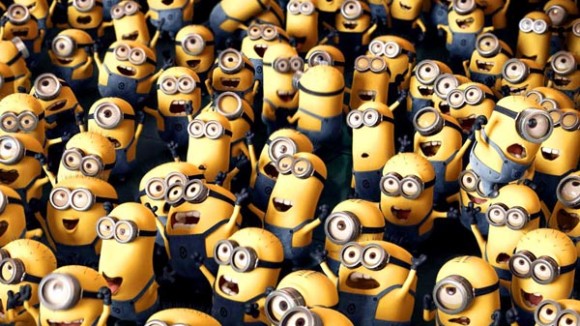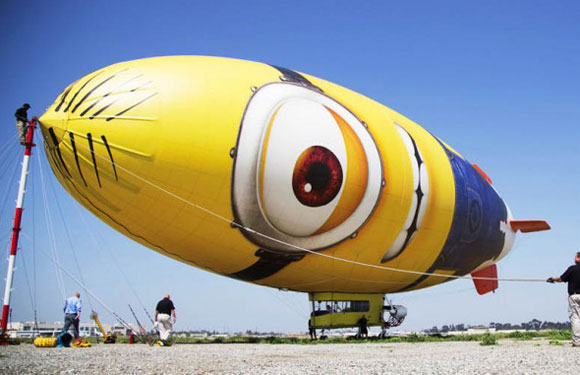

Love Them or Hate Them, The Minions Are Here To Stay

Leading up this week’s release of the sequel, Despicable Me 2, the minions are the center of an inescapable advertising bonanza, overshadowing even the human characters in the film. The yellow pill-shaped creatures are on billboards, bus ads, and commercials. They have their own upcoming attraction at Universal Studios Hollywood (they’re already at Universal Orlando), themed hotel suites, video game and a feature-length prequel set for a 2014 release. And then there’s the Despicablimp, a 165-foot-long, 55-foot-tall airship which is currently on a six-month, 20,000-mile journey across the United States to promote the film.
No longer the background entertainment, the minions are the cornerstone of the marketing plan for Despicable Me 2, starring in nearly every ad for the film. Their success among audiences surprises even the film’s writers. “We never knew the minions were going to be so popular; it just became a force of nature,” said the film’s co-writer Cinco Paul in an interview with the Los Angeles Times. The bumbling gibberish and clumsy nature of the minions easily translates across cultures and age groups to win over fans. The minions have also tapped into the striking power of yellow, a color that has found wide recognition in animation and entertainment.

We’ve seen large groups of secondary characters become unofficial film mascots in the past—the aliens from Toy Story and the penguins from Madagascar were breakout stars from their respective films. Hordes of animated characters were a rarer sight when hand-drawn animation was the preeminent feature film technique, but with computer animation, it is easy to replicate and tweak models to achieve a cast of many. The relative ease with which the makers of Despicable Me 2 have created their army of minions would’ve made the 101 Dalmatians animators cry with joy.
The Los Angeles Times recently published an article on the success of the minions, which twice praises the characters’ simple design and says that even children can draw them. But it’s more than just the “simple, graphic nature” of the minions that makes them a success with audiences. Their childlike mannerisms and brazen stupidity is a brand of humor that translates to almost any demographic. Their giggles and gibberish, though annoying to some, is downright infectious.
Even though they risk overexposure, the minions could become a coveted marketing model for animated features, and it won’t be surprising if other studios attempt to copy the formula. But this could result in derivative forms that feel superficial, especially if the characters’ personalities aren’t developed with care. The minions’ push to the forefront grew organically from audience response to the first film. Perhaps then, the real lesson here is that even in this modern era of sequels, prequels, spin-offs, remakes and adaptations, audiences still value and reward original creations.
